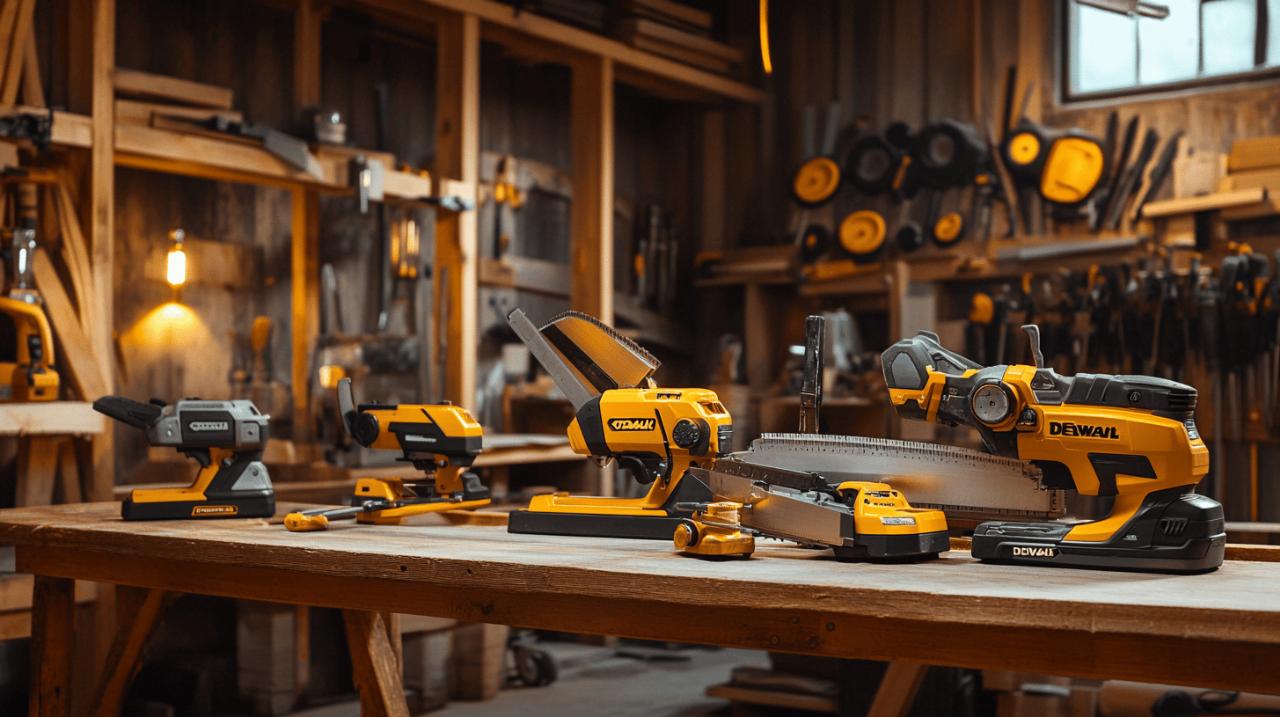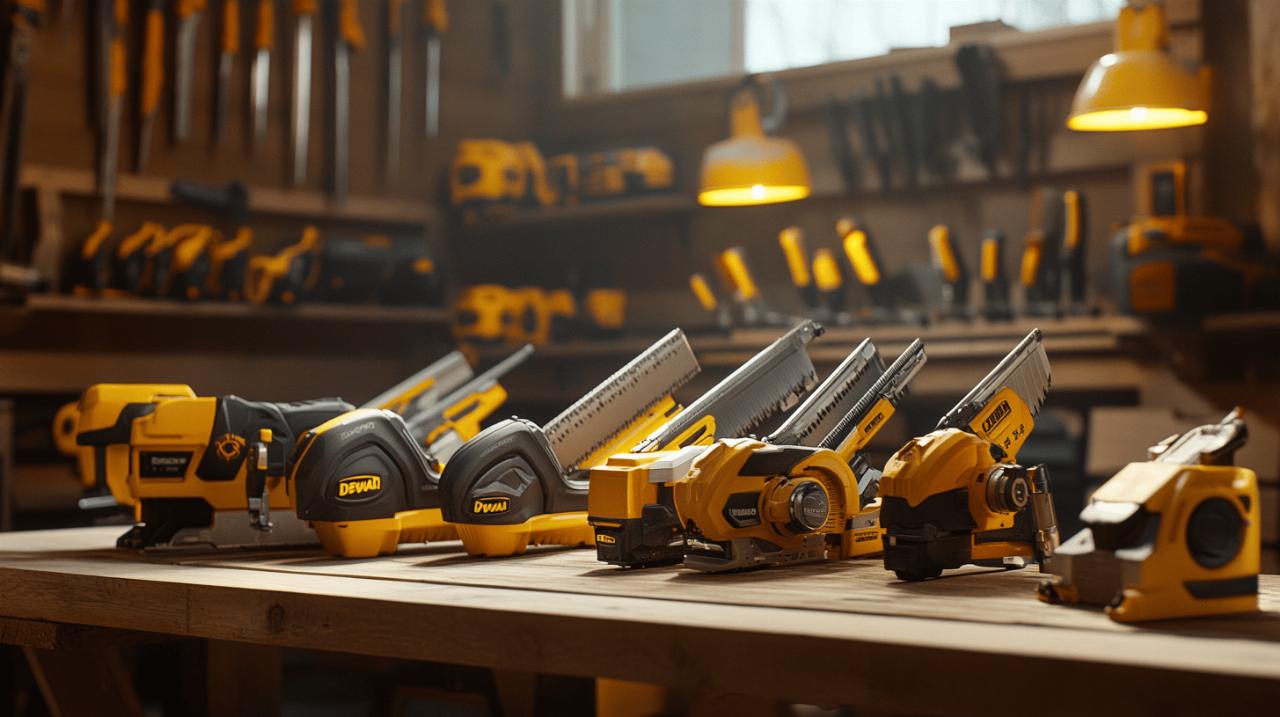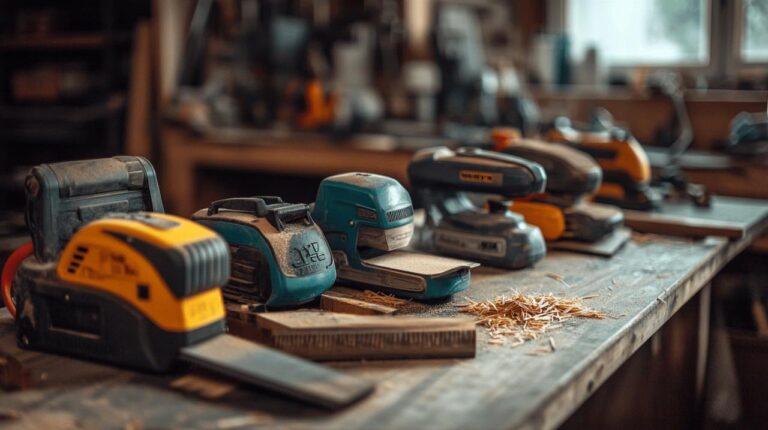
For professionals and serious hobbyists alike, selecting the right mitre saw represents a significant investment in both time and budget. DEWALT stands as one of the most respected names in power tools, having built its reputation over a century of delivering reliable, robust equipment for demanding applications. With an extensive catalogue that includes both corded and cordless options, blade sizes ranging from compact models to full-sized workshop stalwarts, and features designed to enhance precision and efficiency, navigating the range can seem daunting. Understanding which models best suit specific professional needs requires careful consideration of cutting capacity, power source, and the environment in which the tool will be used most frequently.
Understanding DEWALT Mitre Saw Types and Blade Capacities for Professional Applications
When embarking on the journey to select a mitre saw, the first decision revolves around the fundamental type of saw required. DEWALT offers standard mitre saws alongside sliding compound models, each designed with distinct advantages. Standard mitre saws provide straightforward, reliable cuts for projects where the workpiece dimensions remain within the saw's fixed capacity. These models excel in environments where consistency and repeatability matter most, such as trim work or framing where the same angles and dimensions recur throughout the day. Sliding compound mitre saws, by contrast, incorporate a rail system that allows the blade to move forward and backward, dramatically increasing the width of material that can be cut in a single pass. This functionality proves invaluable when working with wider boards, crown moulding, or any application where maximising crosscut capacity without repositioning the workpiece saves time and maintains accuracy.
Standard mitre saws versus radial arm models: assessing cut capacity requirements
The distinction between a standard mitre saw and a sliding model fundamentally alters the scope of projects a tradesperson can tackle efficiently. Standard models such as the DEWALT DWS715, a twelve-inch single bevel compound saw, offer impressive precision and durability without the added complexity of sliding rails. This model has been recognised as one of the best non-sliding saws available, delivering exceptional performance at a list price that reflects good value for those who do not require extended crosscut capacity. The absence of sliding mechanisms reduces potential points of wear and simplifies maintenance, making it an attractive choice for workshops where space constraints or budget considerations take precedence. Conversely, sliding models like the DEWALT DWS780, a twelve-inch double-bevel sliding compound saw, expand capabilities significantly. Recognised as the best overall miter saw in recent product testing conducted in November, this model commands a higher price but delivers unparalleled versatility. The dual-bevel function eliminates the need to flip workpieces when cutting complex angles, streamlining workflow and reducing the risk of measurement errors.
Blade size considerations: matching cutting depth to your project demands
Blade diameter directly influences the depth and width of cut a mitre saw can achieve, making this specification critical when matching a tool to the demands of professional work. DEWALT manufactures mitre saws in several blade sizes, including compact models and larger variants suited to heavy-duty applications. The twelve-inch blade size, available in both the DWS780 and DWS715 models, represents the industry standard for professional tradespeople requiring maximum cutting capacity. These saws handle substantial timber sections and wide boards with ease, making them indispensable for framing, decking, and large-scale joinery. Smaller blade sizes, such as the seven and a quarter inch diameter found in cordless models like the DEWALT DCS361B, sacrifice some cutting depth in exchange for portability and reduced weight. This model, highlighted as the best battery-powered option in recent evaluations, proves ideal for site-based work where access to mains power remains inconsistent or where mobility between work areas demands a lighter, more compact tool. The balance between blade size and portability must align with the specific demands of your typical projects, ensuring the tool enhances rather than hinders productivity.
Dws electric range versus dcs cordless models: evaluating power and portability
One of the most significant decisions facing professionals today involves choosing between corded electric models and battery-powered alternatives. DEWALT has developed comprehensive ranges in both categories, each tailored to different working environments and user priorities. The DWS series encompasses the electric corded models, while the DCS range represents the cordless lineup, offering flexibility and freedom from cables. Understanding the strengths and limitations of each series enables informed decision-making based on the realities of your working conditions.
DWS Electric Series: Precision and Reliability for Workshop Environments
The DWS range has long been the backbone of professional workshops, delivering consistent power and precision without the need to monitor battery levels or pause for recharging. Models such as the DWS780, with its twelve-inch blade and double-bevel sliding capability, exemplify the performance expected from a premium electric mitre saw. Testing conducted in November highlighted its exceptional accuracy, robust dust collection, and generous cut capacity, attributes that justify its position as the best overall miter saw for professional use. The continuous power supply ensures that even extended cutting sessions proceed without interruption, a crucial advantage in high-volume production environments or when working with dense hardwoods that demand sustained motor performance. Additionally, the DWS715, a single bevel compound model, provides a more accessible entry point into the professional electric range without compromising on build quality or cutting precision. These electric models typically offer superior torque and blade speed compared to their cordless counterparts, resulting in cleaner cuts and reduced strain on the motor during demanding applications.
DCS Cordless Range: Flexibility and Convenience for Site-Based Work
The evolution of battery technology has transformed cordless power tools from convenient supplements into genuine alternatives to corded equipment, and the DCS range showcases DEWALT's commitment to this revolution. The DCS361B, a twenty-volt maximum seven and a quarter inch single bevel sliding compound saw, stands out as the best battery-powered option according to recent product testing. While its cutting capacity naturally falls short of larger twelve-inch models, its cordless design eliminates the constraints of power cables, making it exceptionally practical for installations, renovations, and site work where electrical outlets may be scarce or inconveniently located. Battery packs in various capacities, including eight amp-hour, six amp-hour, and four amp-hour configurations, allow users to balance runtime against weight considerations. The XR Flexvolt range further extends cordless capabilities, offering compatibility with higher voltage systems that deliver power levels approaching those of corded models. For tradespeople who frequently move between job sites or work in environments where trailing cables present hazards or logistical challenges, the DCS cordless range offers a compelling combination of performance and portability that justifies the premium associated with battery-powered tools.
Pricing, Product Reviews, and Real-World Performance Feedback from Tradespeople
 While specifications and features provide essential information, the true measure of a tool's worth emerges through sustained use in professional environments. Pricing structures within the DEWALT range reflect differences in capability, with entry-level models offering solid performance at accessible price points and premium models commanding higher investment in return for advanced features and extended durability. Real-world feedback from tradespeople who rely on these tools daily offers invaluable insights that go beyond marketing claims and technical specifications.
While specifications and features provide essential information, the true measure of a tool's worth emerges through sustained use in professional environments. Pricing structures within the DEWALT range reflect differences in capability, with entry-level models offering solid performance at accessible price points and premium models commanding higher investment in return for advanced features and extended durability. Real-world feedback from tradespeople who rely on these tools daily offers invaluable insights that go beyond marketing claims and technical specifications.
Balancing Budget Against Quality: What to Expect at Different Price Points
The DEWALT mitre saw range spans a broad price spectrum, with models available to suit varying budgets and professional requirements. At the upper end, the DWS780 commands a list price reflecting its status as a flagship model, incorporating double-bevel functionality, sliding rails, and the precision engineering expected from a tool designed for years of intensive use. This investment proves worthwhile for professionals whose livelihoods depend on accuracy and reliability, as the cost distributes over countless projects and extended operational life. Mid-range options such as the DWS715 provide substantial capability at a more accessible price point, sacrificing the sliding function and dual-bevel convenience but retaining the core qualities that define professional-grade equipment. For those prioritising cordless convenience, the DCS361B represents a considered investment in mobility and flexibility, with its list price reflecting the inclusion of advanced battery technology and the engineering required to deliver corded-level performance in a portable format. Budget-conscious buyers might also explore alternative brands such as SKIL, whose ten-inch dual-bevel sliding compound model offers commendable performance at a significantly lower price, though comparisons suggest that DEWALT models typically deliver superior build quality and longevity that justify the premium over time.
Learning from Professional Reviews: Identifying Strengths and Limitations
Product testing conducted by independent reviewers in November evaluated ten miter saws across critical criteria including ease of use, dust collection, cut capacity, cutting power and speed, and precision and accuracy. The results highlighted the DWS780 as the best overall performer, excelling particularly in precision and cut capacity. Tradespeople consistently praise its smooth sliding action, intuitive adjustment mechanisms, and the exceptional quality of cuts achieved even in challenging materials. The DWS715, meanwhile, earned recognition as the best non-sliding saw, with users noting its robust construction and dependable performance in applications where extended crosscut capacity remains unnecessary. Cordless models such as the DCS361B receive commendation for their convenience and adequate power for most site-based tasks, though some users note that sustained cutting in dense hardwoods can deplete batteries more rapidly than anticipated. Dust collection represents another area where DEWALT models generally perform well, with effective extraction systems that maintain cleaner work environments and improve visibility during cutting. Comparative testing also revealed that models from competitors such as Bosch deliver strong performance in specific areas, with the twelve-inch dual-bevel sliding glide model achieving high scores in cut capacity and dust collection, demonstrating that DEWALT's dominance faces robust competition even as it maintains a leading position in the professional market.
Advanced Features and Functionality: Table Saw Integration and Precision Adjustments
Beyond basic cutting capabilities, modern mitre saws incorporate advanced features designed to enhance versatility, accuracy, and user experience. DEWALT has integrated various innovations across its range, from combined functionality that reduces the need for multiple tools to precision adjustment systems that streamline setup and ensure consistent results across repeated cuts. Understanding these features helps professionals identify which models offer the greatest value for their specific applications.
Combined table saw functions: space-saving solutions for compact workshops
Space constraints represent a genuine challenge for many tradespeople, particularly those operating from smaller workshops or mobile units. Some mitre saw models incorporate table saw functionality, offering a dual-purpose solution that reduces the footprint of essential equipment. While DEWALT's primary focus remains on dedicated mitre saws that excel in their specific function, the company's broader tool ecosystem includes workstations and accessories that enhance the versatility of standard models. Portable stands and integrated work surfaces allow mitre saws to function as the centrepiece of a compact cutting station, providing support for longer workpieces and integrating measurement systems that improve efficiency. These solutions prove particularly valuable for site-based professionals who require maximum capability from minimal equipment, enabling a single tool to address diverse cutting requirements without necessitating separate dedicated machines. The practicality of such arrangements depends on the specific demands of your work, with some tradespeople preferring the precision and capacity of dedicated tools while others value the flexibility and reduced logistics of multi-functional setups.
Achieving accurate mitres: setting adjustments and precision controls
Precision represents the defining characteristic of professional-grade mitre saws, and DEWALT incorporates numerous features designed to ensure accurate, repeatable cuts. Detent systems provide positive stops at commonly used angles, allowing rapid repositioning without sacrificing accuracy. The quality of these detents varies across the range, with premium models offering more precise engagement and reduced play that translates directly into tighter joints and better finished work. Bevel adjustment mechanisms similarly influence usability, with the dual-bevel capability found on models like the DWS780 eliminating the need to flip workpieces when cutting compound angles. This functionality not only speeds up workflow but also reduces the potential for errors that arise from repositioning and remeasuring. Laser guides and LED work lights, featured on various DEWALT models, further enhance precision by improving visibility and providing clear visual references for blade positioning. While these features may seem secondary to raw cutting power, professional users consistently cite them as crucial elements that distinguish superior tools from adequate ones, particularly during intricate trim work or projects where tolerances remain tight and margins for error vanish. Taking time to familiarise yourself with the adjustment systems and precision features of any mitre saw before committing to regular use pays dividends in reduced waste, improved finish quality, and enhanced professional reputation.






